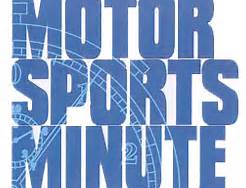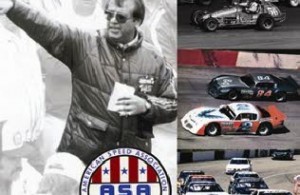1976 Governor’s Cup 250 At The Milwaukee Mile
- Updated: August 22, 2007
As America was winding down it?s celebration of her bicentennial on the weekend of September 11 and 12, 1976, things certainly were different. We only had four of five television channels to view, no DVD or iPods players, home computers were uncommon and some of the lucky ones were able to play the early videogame ?Pong.? Comedian, Gabe Kaplan was visiting our living rooms as Mr. Kotter in the hit show ?Welcome Back Kotter.? The ?Gong Show? and ?Charlie?s Angels? were also the cultural height of 1976 on television. ?Afternoon Delight? by the Starland Vocal Band and ?After the Lovin?? by Englebert Humperdinck were on our transistor radios in 1976. Peanut farmer and Georgia Governor Jimmy Carter was campaigning to be the next President. The kids were back in school and Bart Starr was in his second year as head coach of the Green Bay Packers. Meanwhile, the Milwaukee Mile was hosting its sixth and final race of the 1976 season.
Traditionally, the final event of the year at Milwaukee was the Governors Cup 250. The September race was usually the longest of the year and typically had big implications for those battling for the points championship on the USAC Stock Car trail.
As the USAC Stock Car contingent gathered for the 250-mile grind at the ?Mile, Butch Hartman led Sal Tovella and Ramo Stott in the point standings. The trio finished in the top-three the previous season with Stott breaking Hartman?s streak of four straight USAC Stock Car championships with veteran Sal Tovella finishing third in the final tally. Hartman was one of the drivers that switched over to the pony cars which were making headway on the USAC trail. The Chevrolet Camaro and the Chrysler ?Kit Cars? were becoming the preferred choice as the Dodge Chargers and Ford Torinos found themselves chasing the smaller cars. The Chrysler Kit car program was developed by Larry Rathgeb, Manager of Stock Car Programs at Chrysler. Rathgeb saw a need for stock car that was capable of running the local short tracks, yet adaptable for pavement racing such as USAC. Kit Cars were available from local Chrysler-Plymouth or Dodge dealer as a kit, thus the name ?kit car.?
The previous month, the intermediate cars struck back at the pony cars as Larry Moore broke Bobby Unser?s three year old qualifying record by circling the one mile oval in 33.074 seconds in G.W. Pierce?s blue Dodge Charger. The Dayton, Ohio driver seem to qualify well at Milwaukee, however mechanical gremlins would hamper Moore?s efforts throughout the ’76 season at Milwaukee. The aforementioned Hartman?s yellow and black #75 Camaro wrenched by his father, Dick was ready for action when it arrived at the track. Hartman won the Miller 200 in July and the Thursday Fair Stock 150 in August. Tovella, the used car dealer from Chicago brought his ex-Norm Nelson Road Runner to the ?Mile. Defending USAC champion Ramo Stott of Keokuk, IA brought his Jack Housby owned dark blue Plymouth Volare kit car to the Wisconsin Fairgrounds, his win in the Fair Stock 200 was popular among fans. Other favorites included veterans Don White also from Keokuk, IA driving a yellow Dodge Aspen Kit car and Jack Bowsher driving his familiar white #21 Ford Torino. Bay Darnell of Deerfield, IL headed the Chicago contingent that included Art Bormet, Frank Cabrea, Tom Jones, Gene Marmor, Bob Dotter and Rich Sundling. Wisconsin favorites included Paul Feldner in his venerable Dodge Charger, Dick Trickle (driving a Bay Darnell prepared Camaro) and Ashland’s Bob Brevak in his trusty Charger. Veteran Roger McCluskey reunited with USAC legend Norm Nelson after a three year hiatus. McCluskey was driving a Plymouth Volare kit car in the familiar white and blue hood made famous by McCluskey and Nelson in the 1960?s and early 1970?s.
Jack Bowsher took the pole on Saturday with a lap of 33.21 seconds (108.401mph), this was Bowsher?s fourteenth and final pole at the Milwaukee Mile. McCluskey, Tovella, Stott and Trickle trailed in qualifying. Bowsher took the lead on the break as McCluskey and Tovella pushed the ’21’ car hard as they entered the south turn. Stott and Trickle chased the lead trio as Hartman, Larry Phillips, Don White, Terry Ryan and Moore completed the top 10. Tovella eventually passed McCluskey and then Bowsher to take the lead on lap four. As Tovella streaked to lead on lap 5, Don White spun his #93 Dodge and walloped the north turn wall as Paul Feldner slammed into White. Ray Bolander and Russ Peterson also were involved in the melee. Tovella led till lap 25 as McCluskey passed him for the lead. Bay Darnell?s hemi lost a piston on lap 29 as he coasted to a stop on the backstretch bringing out the yellow. Pit stops shuffled the line-up as Hartman, Trickle, Gary Bowsher and Larry Phillips found themselves in the top 5, the latter two skipped their pit stops during the last caution. Trouble befell the Missouri short track ace as Phillips had a gas line come loose causing a fire which was quickly extinguished by the Wisconsin Auto Racing Fire Crew. McCluskey returned to the lead as Tovella and Bowsher climbed back to the top three.
The hard charging McCluskey surprisingly lapped Hartman on lap 140 and was aided by quick pit stops from the Norm Nelson crew led by veteran crew chief Jerry Kulwicki. Unfortunately, Trickle fell a few spots due to his long pit stops. The final caution came out on lap 192 with Bob Brevak had his differential on his blue #34 Charger lock up causing him to spin on the backstretch. McCluskey dominated the race as he crossed the finish line a comfortable seven seconds in front of Ramo Stott. Hartman came home third as Trickle edged Tovella for fourth. Davenport, Iowa?s Terry Ryan was the first non-pony car to finish as his Chevelle came home sixth. McCluskey completed the 250-miles in 2 hrs and 39 seconds.
Hartman retained his point lead over Tovella with his third place finish with one race remaining at College Station, TX. Hartman would go on to win his fifth and final USAC Stock Car championship. This was also the last hurrah for the McCluskey and Nelson team. Even though they reunited a couple of years later for an ill-fated AMC partnership this was their last win together. Fittingly that win occurred at The Milwaukee Mile where they shared so much of their success.
Steve Zautke, a Milwaukee, WI native, was raised in the sport of auto racing. His father, Bill, was a movie photographer that shot racing footage at tracks such as the Milwaukee Mile and the Indianapolis Motor Speedway in the 1960’s and 1970’s Steve’s first professional job in racing was as an Emergency Medical Technician at tracks such as Angell Park and Hales Corners Speedway (1988-1991). Steve has also worked for the Milwaukee Mile as videographer, in media relations and historian (1993-2011). Steve also has worked as a reporter for Racing Information Systems (RIS) and has written features for ‘Vintage Oval Racing’ and ‘Victory Lane’ magazines. Most recently, Steve has written a book on Road America for Arcadia Publishing. ( http://www.amazon.com/Road-America-Nascar-Library-Collection/dp/1467111457 ) Steve co-hosts “Sparky’s Final Inspection” a motorsports-based radio show with hosts, Steve “Sparky” Fifer and “NASCAR Girl” Summer Santana on Sports Radio 1250AM in Milwaukee and is also available on the internet at www.Sportradio1250.com. A member of the National Sprint Car Hall of Fame Induction Committee, Steve follows all types of racing from the dirt tracks to Formula One.





![Porsche Fabcar crosses the finish line. [Robert Madara photo]](https://racingnation.com/wp-content/uploads/2023/11/FabcarFinish-108x70.jpeg)

![USF2000 Pro driver Lindsay Brewer. [Eddie LePine Photo]](https://racingnation.com/wp-content/uploads/2023/06/IMG_8825_2-108x70.jpg)